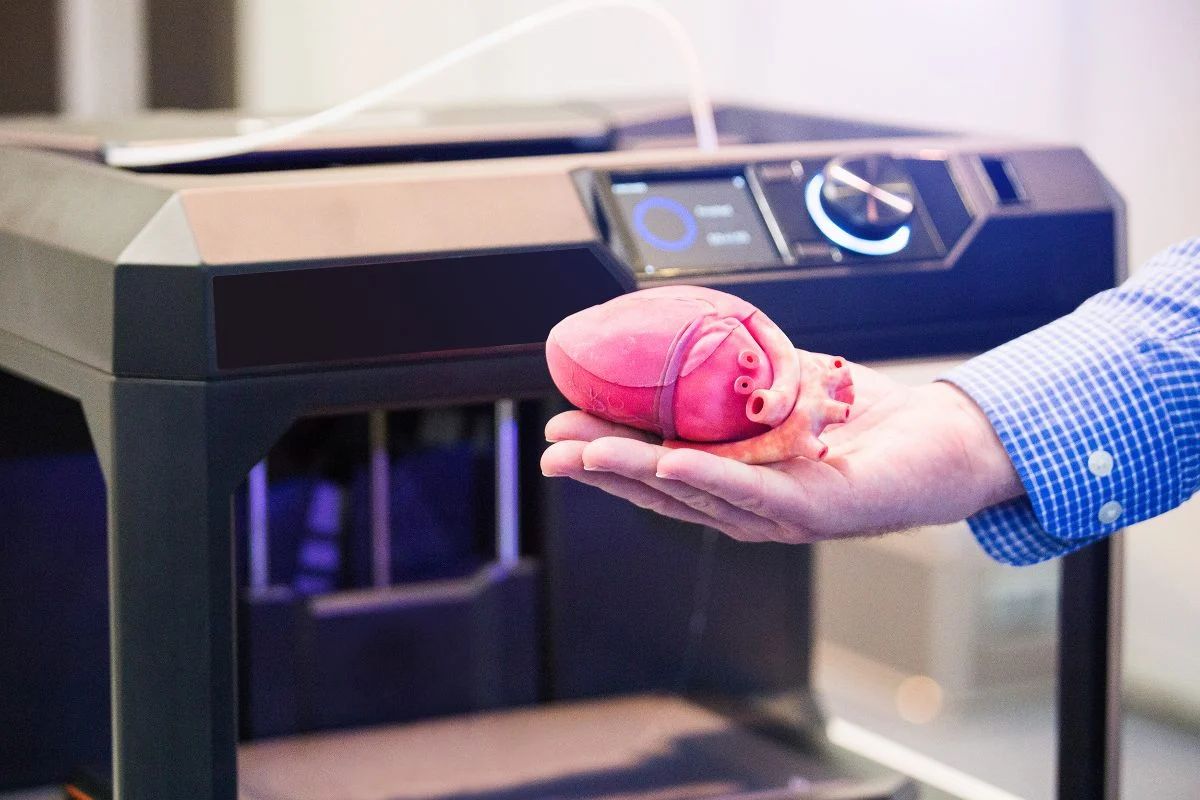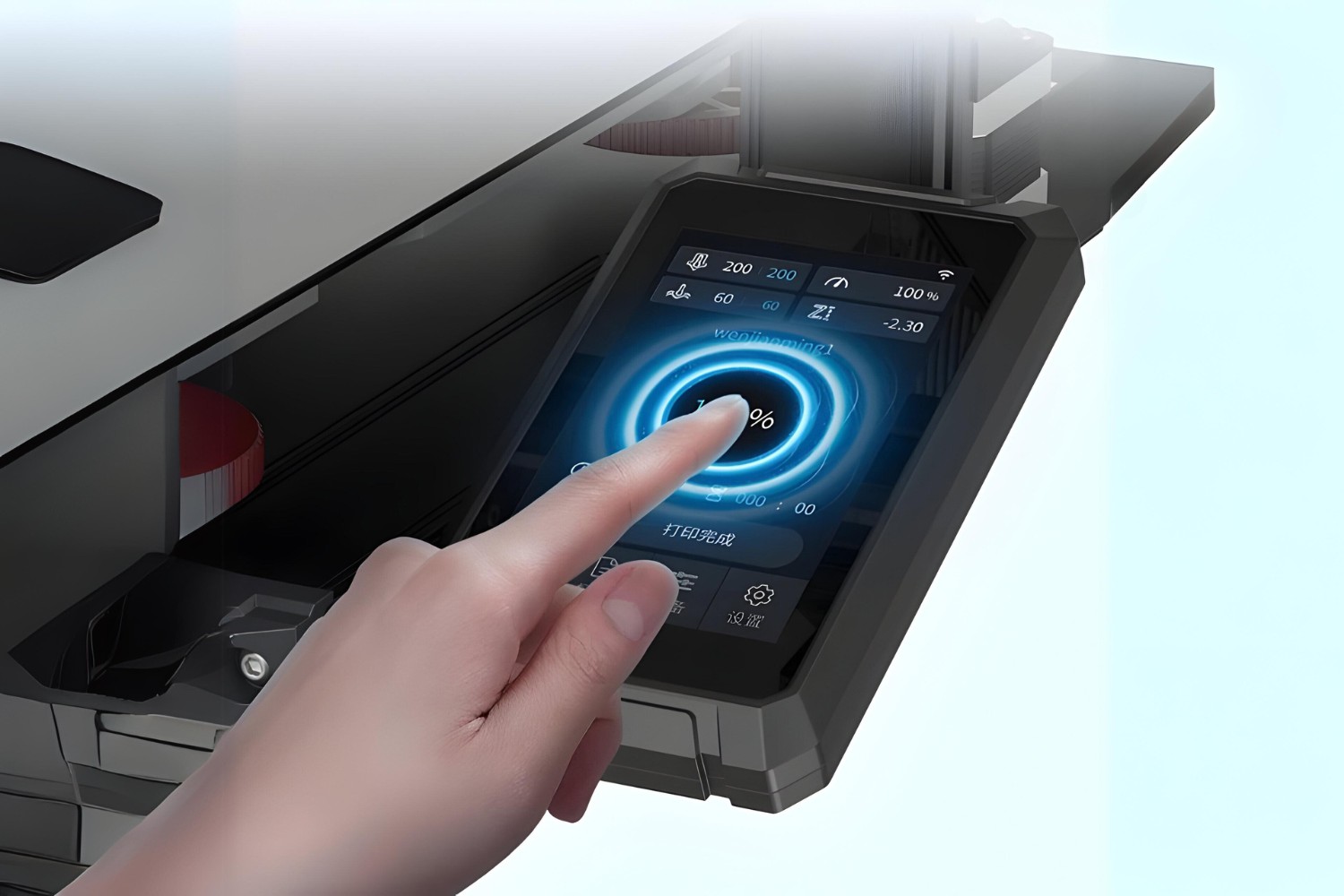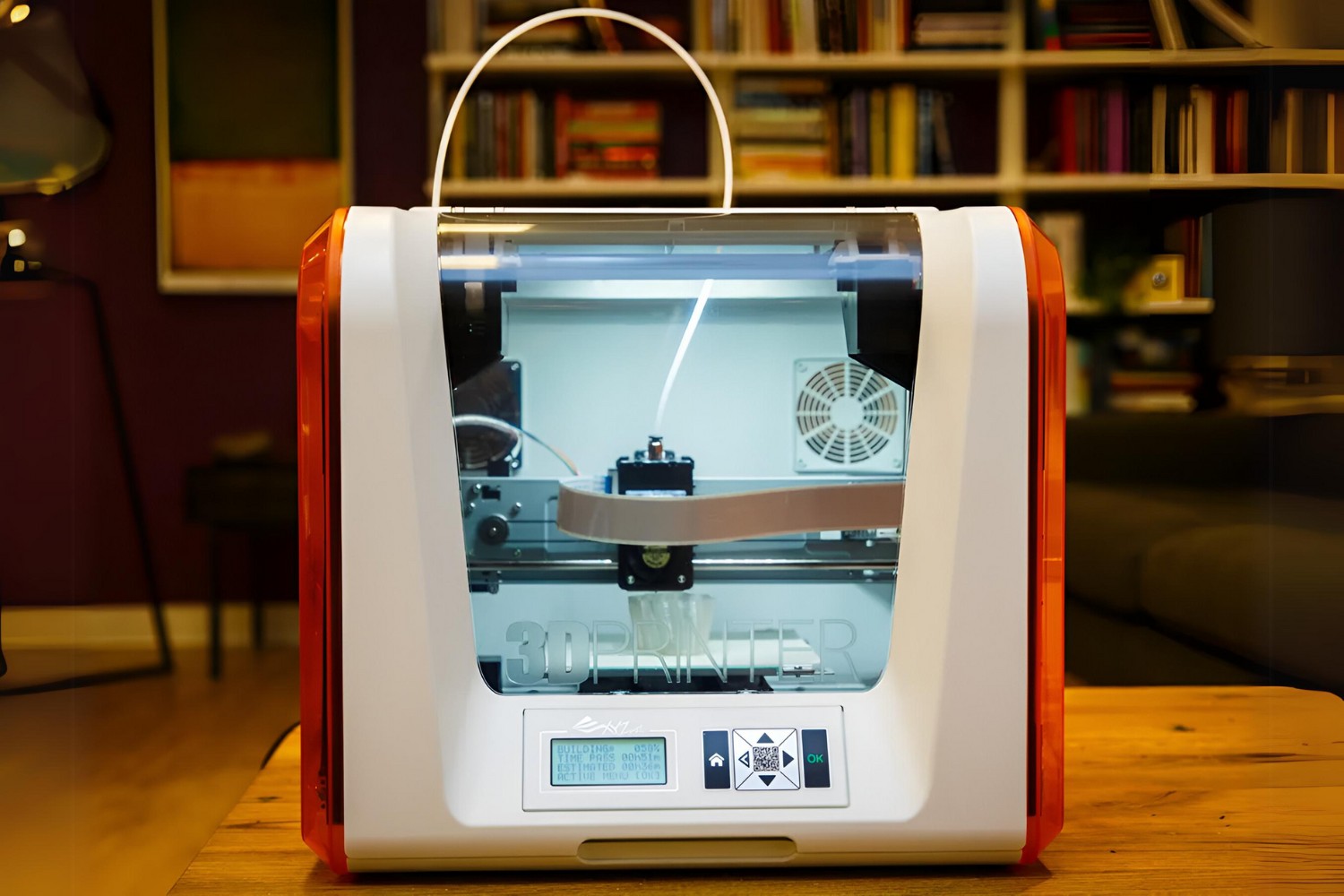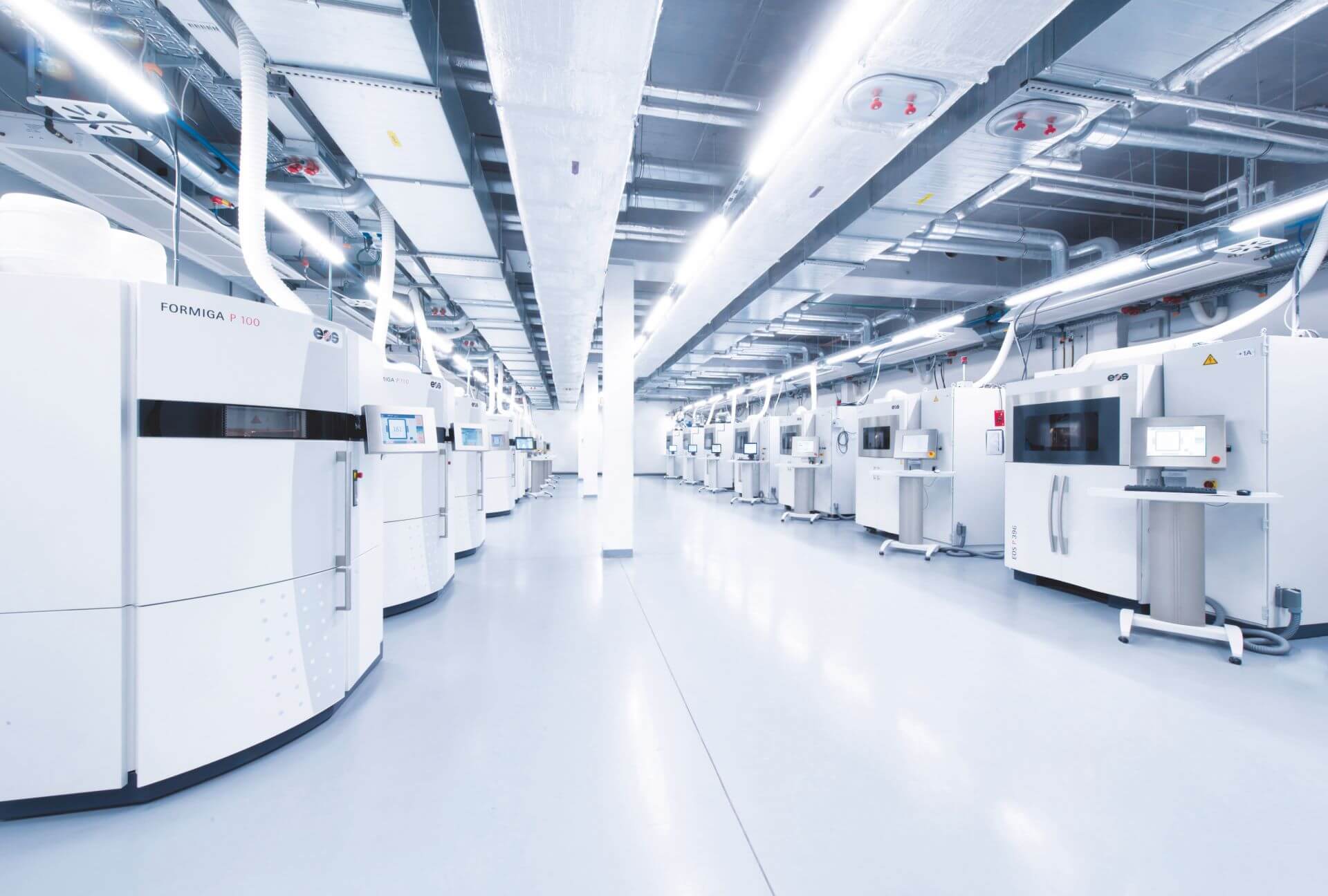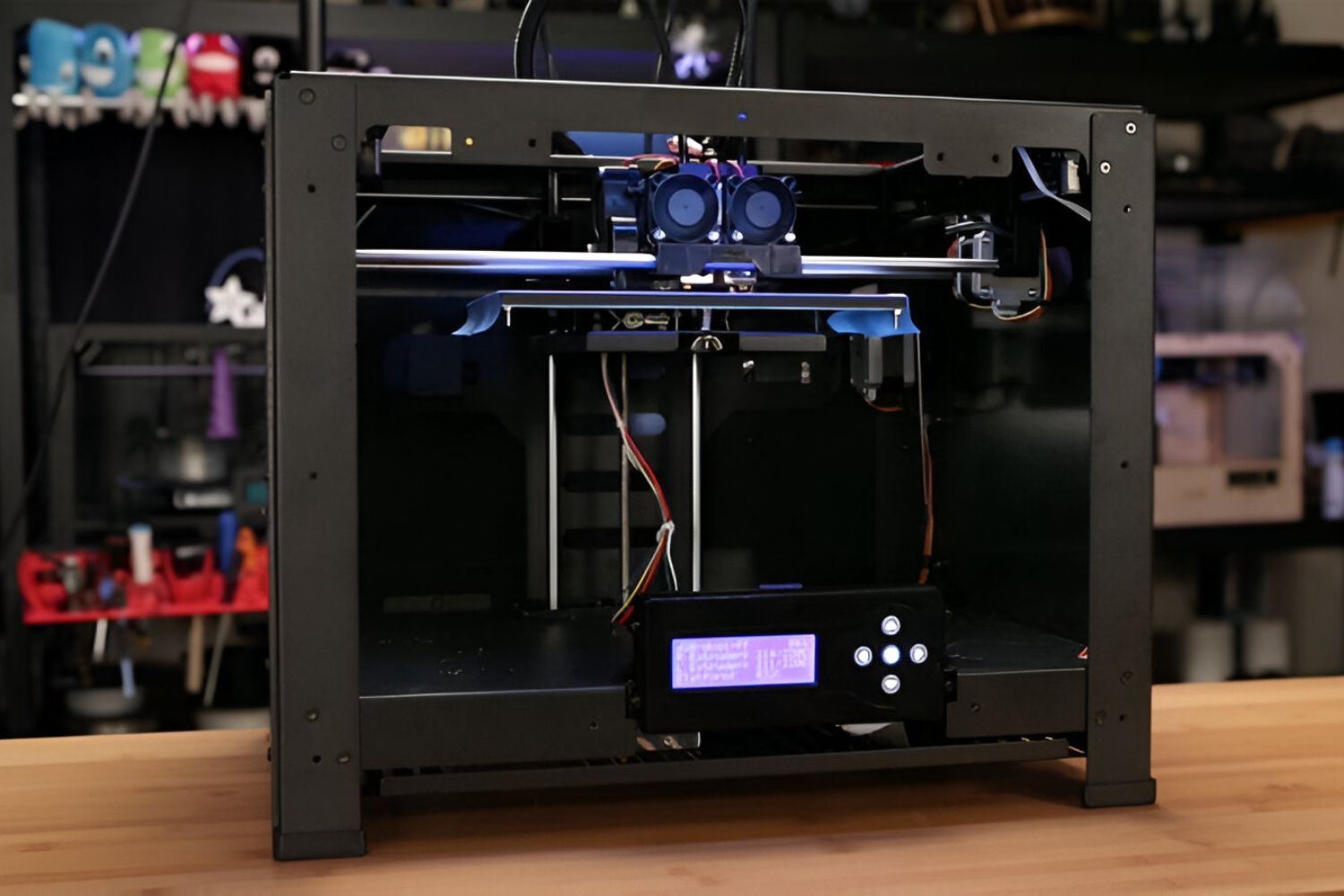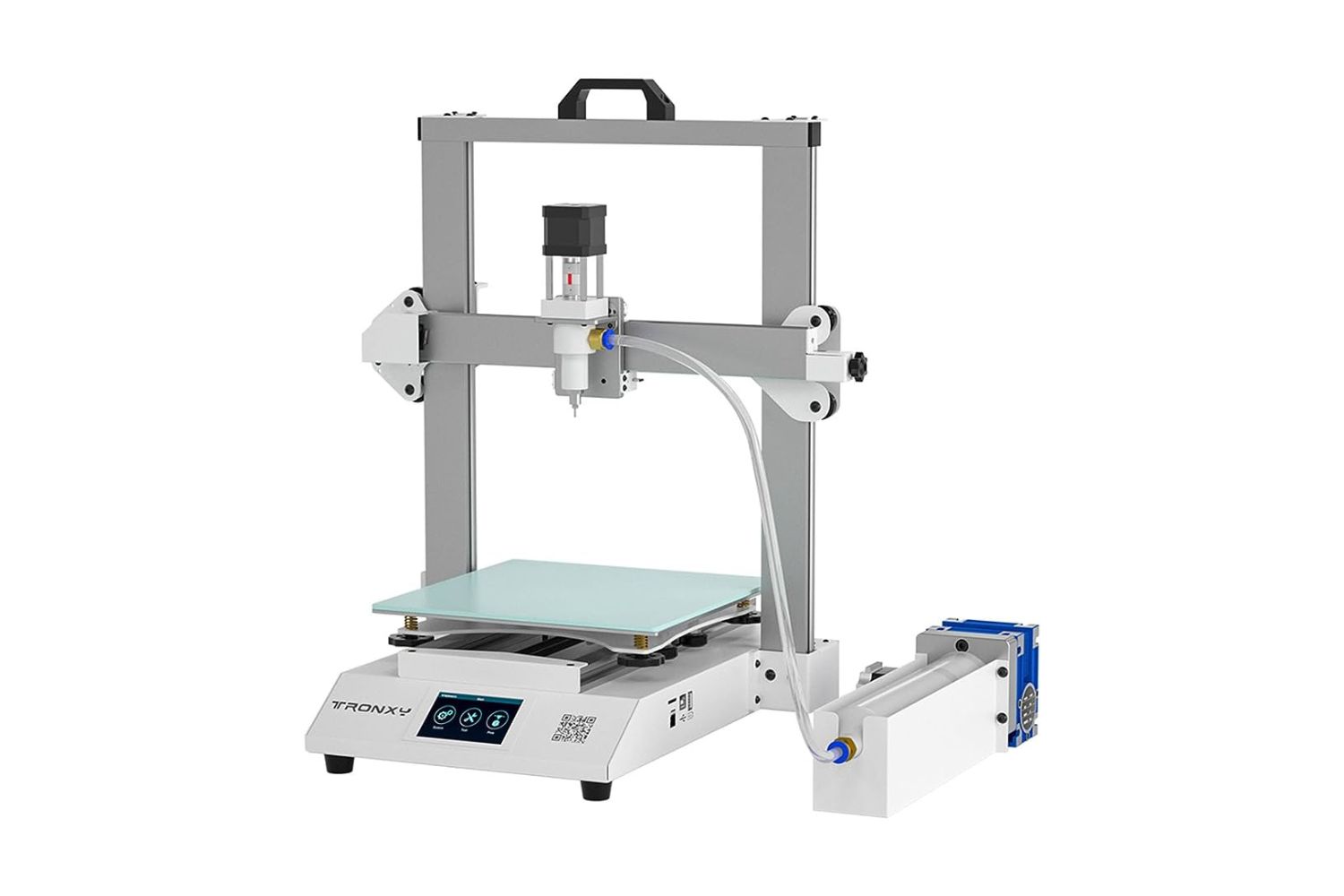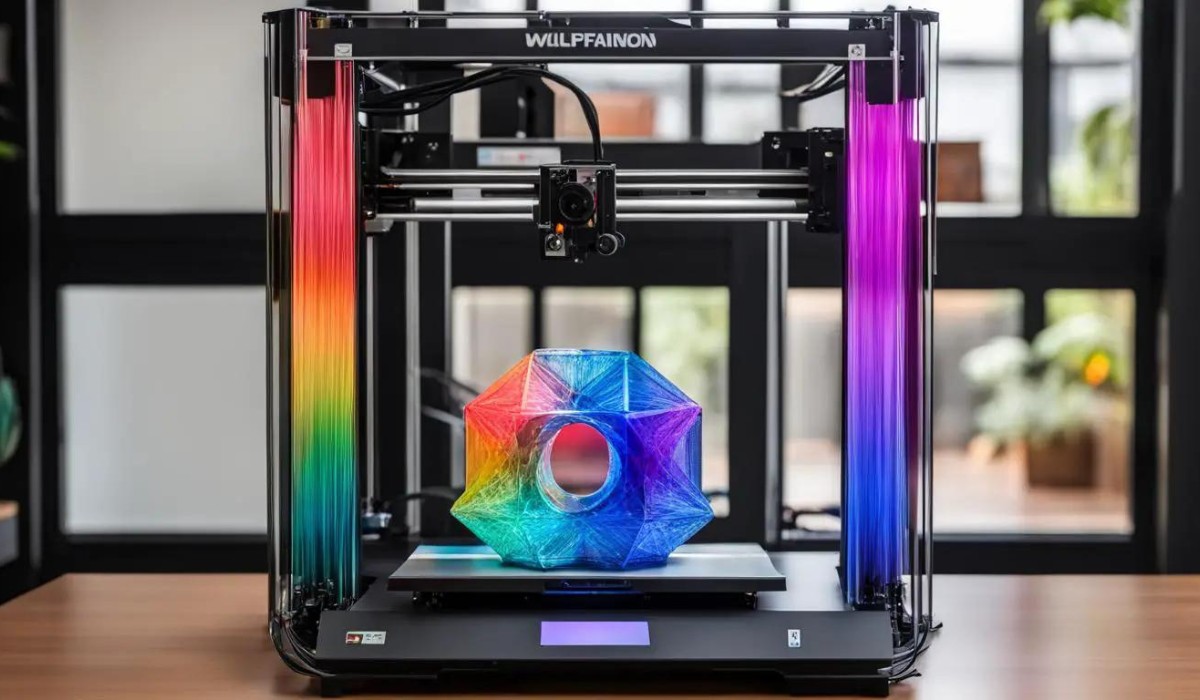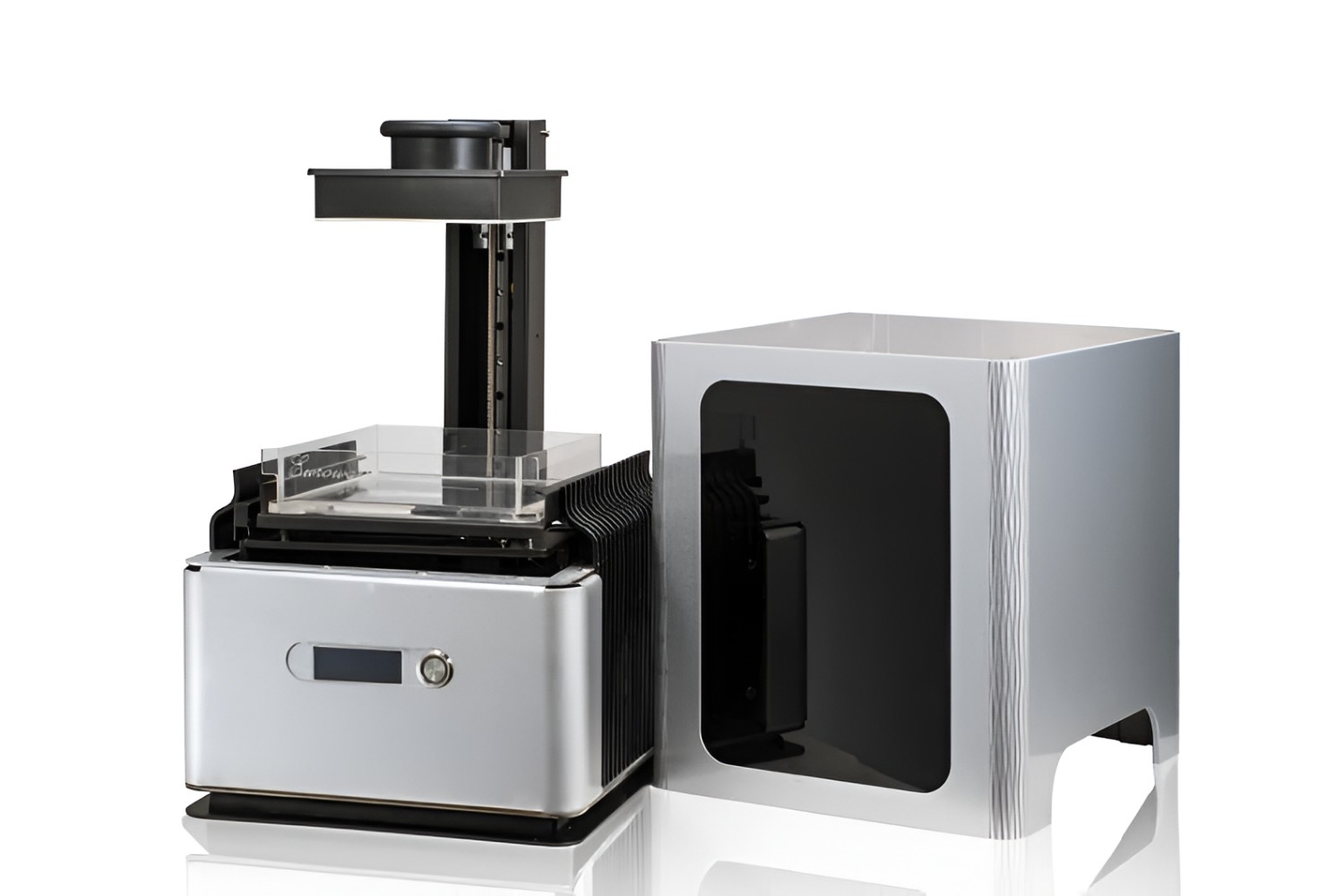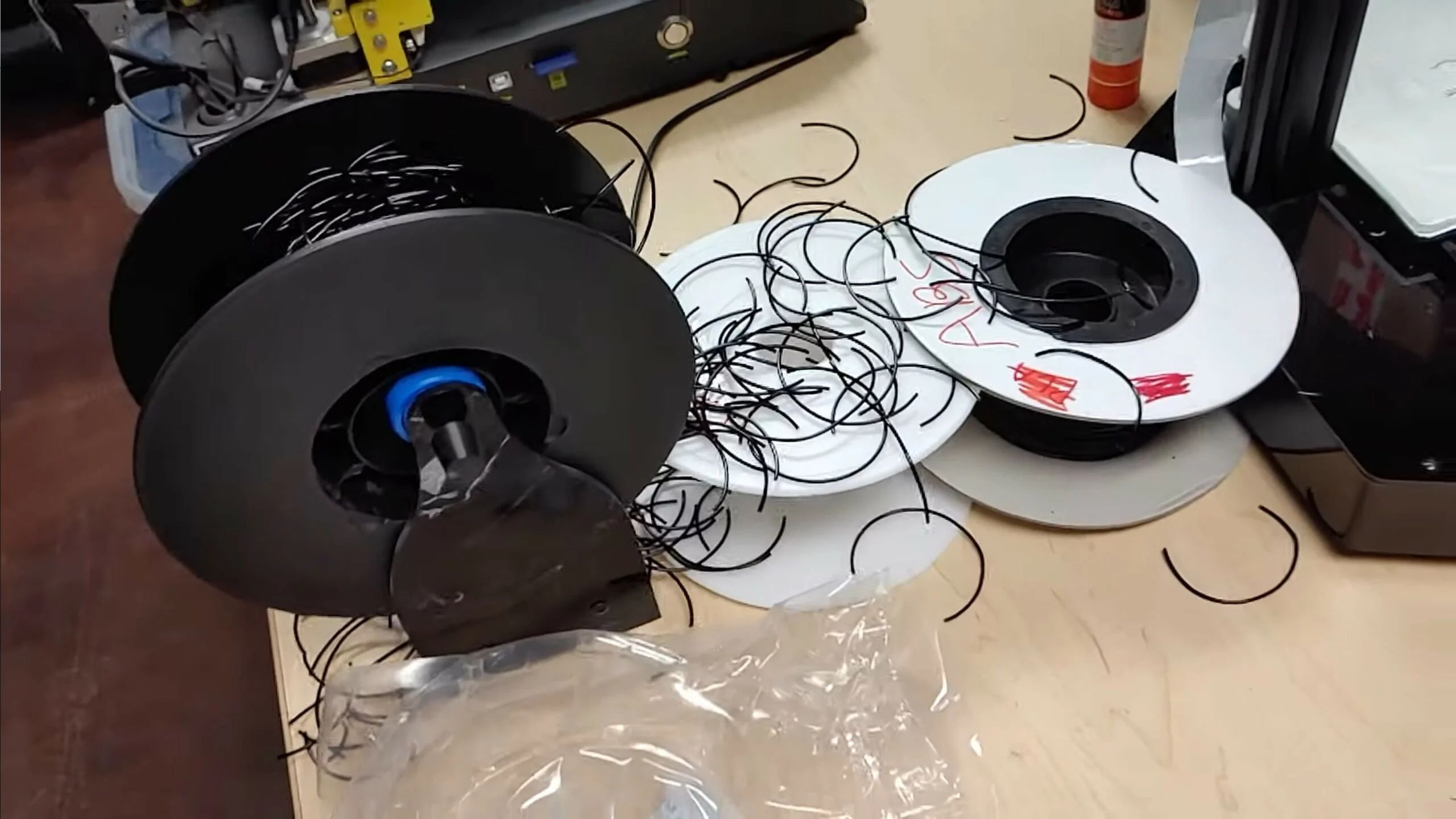Introduction
Technology has always been at the forefront of human advancement, constantly pushing the boundaries of what is possible. One of the most exciting advancements in recent years is the emergence of 3D printing. This innovative technology has revolutionized various industries and has the potential to reshape the way we approach manufacturing and design.
With its ability to create three-dimensional objects, 3D printing has captured the imagination of individuals and businesses alike. From prototype development to custom product manufacturing, this technology has opened up a world of possibilities that were once unimaginable. In this article, we will explore the history, functionality, and applications of 3D printing, as well as its impact on different industries and the future prospects it holds.
Before the advent of 3D printing, manufacturing and prototyping involved complex and time-consuming processes. Traditional manufacturing methods often required molds, machinery, and skilled labor, raising production costs and limiting design possibilities. With 3D printing, however, the limitations of traditional manufacturing have become a thing of the past.
Also known as additive manufacturing, 3D printing allows for the creation of objects layer by layer, using various materials such as plastic, metal, or even food. This precision and versatility make 3D printing an invaluable tool in industries such as aerospace, automotive, healthcare, architecture, and fashion, among others. The potential for innovation and creativity with 3D printing is virtually limitless.
In the following sections, we will delve deeper into the history of 3D printing, its underlying technology, the diverse applications it offers, and the impact it has had on different sectors. We will also explore the advancements that have propelled this technology forward and discuss its benefits and limitations. Finally, we will glimpse into the future of 3D printing and its potential to transform various industries.
The History of 3D Printing
The concept of 3D printing dates back to the 1980s when Chuck Hull, a physicist and inventor, developed a process called stereolithography. This revolutionary technique involved using ultraviolet lasers to transform liquid photopolymers into solid objects layer by layer. Hull went on to co-found 3D Systems Corporation, one of the pioneering companies in the 3D printing industry.
Throughout the 1990s, 3D printing technology started gaining popularity in the manufacturing sector. It was primarily used for rapid prototyping, allowing engineers and designers to create physical models and test their designs before going into production. Although the cost and size of 3D printers limited their accessibility during this time, the technology continued to advance and evolve.
In the early 2000s, 3D printing began to move beyond prototyping and into the realm of functional parts production. Additive manufacturing techniques expanded to include selective laser sintering (SLS) and fused deposition modeling (FDM), offering new possibilities for a wider range of materials and applications.
As the technology became more accessible and affordable, 3D printers started making their way into homes, classrooms, and small businesses. This sparked a creative revolution, enabling individuals to bring their ideas to life and customize everyday objects.
Today, 3D printing has become an integral part of various industries, from healthcare to aerospace, automotive to fashion. It has transformed the way products are developed, manufactured, and distributed. Companies are leveraging 3D printing to enhance design iterations, reduce time-to-market, and optimize supply chains.
The growth of 3D printing shows no signs of slowing down. New advancements continue to emerge, ranging from the use of bioinks in bioprinting to the exploration of new materials like carbon fiber and metal alloys. Additionally, the development of 3D printing on an industrial scale has the potential to disrupt traditional manufacturing processes and create new opportunities for customization and sustainability.
In summary, the history of 3D printing is one of innovation and progress. What started as a groundbreaking concept has now become a transformative technology that is reshaping industries across the globe. With each passing year, new breakthroughs and advancements push the boundaries of what is possible with 3D printing, opening up a world of possibilities for individuals and businesses alike.
What is a 3D Printer?
A 3D printer is a cutting-edge device that creates three-dimensional objects layer by layer through a process known as additive manufacturing. Unlike traditional manufacturing methods that involve subtracting material from a block, 3D printing builds objects by adding layers of material on top of each other until the desired shape is achieved. This process is controlled by a digital model or design, which serves as the blueprint for the object being printed.
At its core, a 3D printer consists of three main components: the printer itself, the printing material, and the software. The printer is the physical machine that executes the printing process. It typically includes a build platform, which serves as the base for the object being printed, and a print head or extruder that moves according to the instructions provided by the digital model.
The choice of printing material depends on the intended use and desired properties of the object. Common materials used in 3D printing include plastics, such as PLA and ABS, metals, like titanium and stainless steel, ceramics, and even food-grade materials. These materials come in various forms, such as filaments, powders, or resins, depending on the specific printing technology.
To bring a digital design to life, 3D printing software is used to convert the digital model into machine-readable instructions. This software slices the model into thin layers, generating a set of instructions for the printer to follow. It also allows for adjustments to be made, such as scaling, orientation, and material selection, providing a high level of customization and control over the printing process.
The functionality of a 3D printer is determined by the specific printing technology employed. Some of the most widely used 3D printing technologies include Fused Deposition Modeling (FDM), Stereolithography (SLA), Selective Laser Sintering (SLS), and Digital Light Processing (DLP). Each technology has its own advantages and limitations, and the choice of technology depends on factors such as desired resolution, speed, and material compatibility.
In recent years, 3D printers have become more affordable and accessible, opening up a world of possibilities for individuals and businesses alike. From artists and hobbyists creating intricate sculptures to engineers and designers prototyping new products, the versatility of a 3D printer has revolutionized the way we think about manufacturing and design.
In summary, a 3D printer is a remarkable piece of technology that enables the creation of complex three-dimensional objects by adding layers of material. Through a combination of hardware, software, and printing materials, this revolutionary device has the potential to transform industries and unleash the creativity of individuals around the world.
How Does a 3D Printer Work?
The process of how a 3D printer works may vary depending on the specific printing technology used. However, the basic principles and steps involved in 3D printing remain consistent. Here is a general overview of the process:
- Creation of a 3D Model: The first step in 3D printing is to create a digital model of the object you want to print. This can be done using computer-aided design (CAD) software or by scanning an existing object using a 3D scanner. The digital model serves as the blueprint for the physical object to be printed.
- Slicing the Model: Once the digital model is ready, it needs to be sliced into multiple thin layers using slicing software. This allows the 3D printer to understand the object layer by layer and ensures accurate reproduction. Each layer is assigned specific instructions for the printer to follow.
- Preparing the Printer: Before printing, the printer needs to be set up and prepared. This involves installing the appropriate printing material, such as a filament or resin, and ensuring the build platform is clean and properly calibrated. The slicing software provides the printer with the necessary instructions for layer thickness and other parameters.
- Printing Process: Once the printer is prepared, the printing process begins. The printer starts by heating the printing material to its melting point (in the case of filament-based printers) or by exposing a photopolymer resin to light (in the case of resin-based printers). The printer’s print head or extruder moves according to the instructions provided by the sliced model, depositing the material layer by layer to build the object.
- Layer by Layer Building: As the printer deposits each layer of material, it cools and solidifies to form a solid object. The build platform of the printer may move up or down, depending on the specific printer design, to accommodate the height of each layer. This process continues until the object is fully printed.
- Post-Processing: After the printing process is complete, the printed object may require post-processing. This can include removing support structures if any were used during printing, sanding or polishing the object’s surface, or performing additional steps to enhance its functionality or appearance.
It’s important to note that the speed and quality of a 3D printer’s output can vary depending on factors such as the chosen printing technology, the complexity of the object being printed, and the desired resolution. Some 3D printers are capable of printing intricate details with high precision, while others prioritize speed or a larger build volume.
In addition, advancements in 3D printing technology have introduced new capabilities, such as multi-material printing, where different materials can be used within a single print, and bioprinting, which enables the production of living tissues and organs. These developments continue to push the boundaries of what is possible with 3D printing and open up exciting avenues for research and innovation.
In summary, a 3D printer works by translating a digital model into a physical object through the layer-by-layer deposition of printing material. The process involves creating a 3D model, slicing it into individual layers, preparing the printer, and executing the printing process. This technology has revolutionized manufacturing and design by democratizing the production of complex objects and enabling customization and innovation on a whole new scale.
Applications of 3D Printing
The versatility of 3D printing technology has led to its widespread adoption across a wide range of industries. From healthcare to aerospace, automotive to fashion, 3D printing has transformed the way products are designed, developed, and manufactured. Here are some of the key applications of 3D printing:
- Rapid Prototyping: 3D printing has revolutionized the prototyping process, allowing designers and engineers to quickly create physical models of their concepts. This enables faster iterations, reducing time-to-market and costs associated with traditional prototyping methods.
- Customized Manufacturing: One of the most significant advantages of 3D printing is its ability to produce customized products. Whether it’s personalized consumer goods or patient-specific medical implants, 3D printing allows for the production of unique items tailored to individual needs and preferences.
- Healthcare and Biomedical Applications: In the healthcare industry, 3D printing has been instrumental in the production of medical devices, prosthetics, and anatomical models for surgical planning. It has also opened up new possibilities in bioprinting, where living tissues and organs are printed using human cells.
- Aerospace and Automotive: 3D printing plays a crucial role in the aerospace and automotive industries. It enables the production of lightweight and complex parts with high precision, reducing the weight of aircraft and improving fuel efficiency. In the automotive industry, 3D printing allows for the rapid prototyping of vehicle components and the customization of parts.
- Architecture and Construction: 3D printing has the potential to revolutionize the construction industry. It enables the fabrication of intricate architectural models, facilitates the production of complex building components, and offers the ability to construct entire buildings using additive manufacturing techniques.
- Fashion and Design: 3D printing has disrupted the world of fashion and design by offering new possibilities for customization and experimentation. Designers can create unique clothing, jewelry, and accessories that push the boundaries of traditional manufacturing techniques.
These are just a few examples of the many applications of 3D printing. The technology continues to expand into new industries and avenues, with ongoing research and development pushing the boundaries of what is possible. As 3D printing becomes more accessible, its potential to transform various sectors and empower individuals with creative freedom becomes increasingly evident.
In summary, the applications of 3D printing span a wide spectrum of industries, from healthcare to automotive, aerospace to fashion. The ability to rapidly prototype, customize, and create complex objects has revolutionized the way products are designed and manufactured. As the technology continues to evolve, we can expect even more innovative applications and advancements in the field of 3D printing.
The Impact of 3D Printing on Various Industries
The advent of 3D printing has had a profound impact on various industries, transforming the way products are designed, manufactured, and distributed. Let’s explore the specific impacts of 3D printing in several key sectors:
- Healthcare: 3D printing has revolutionized healthcare by enabling the production of patient-specific medical devices, prosthetics, and anatomical models for surgical planning. It has also opened up possibilities in bioprinting, allowing for the fabrication of living tissues and organs, potentially revolutionizing transplantation procedures.
- Aerospace and Automotive: 3D printing has made significant strides in the aerospace and automotive industries. It allows for the production of lightweight, high-performance parts with complex geometries that were previously impossible or economically unfeasible. This leads to improved fuel efficiency in aerospace and faster prototyping and customization in the automotive sector.
- Architecture and Construction: 3D printing has the potential to transform the architecture and construction industries. It offers the ability to create complex structures with a high level of precision, opening up new possibilities in architectural design. Additionally, additive manufacturing techniques can reduce construction waste and enable the creation of low-cost housing in remote or disaster-stricken areas.
- Manufacturing and Supply Chain Optimization: With 3D printing, manufacturing processes can become more efficient and streamlined. This technology allows for on-demand production, reducing the need for inventory and enabling customization. Companies can also optimize their supply chains by printing components on-site, reducing transportation costs and lead times.
- Fashion and Design: 3D printing has disrupted the fashion and design industries by offering new possibilities for customization and innovation. Designers can create unique clothing, jewelry, and accessories with intricate designs that were previously challenging to produce using traditional manufacturing processes.
These are just a few examples of the impact of 3D printing on various industries. As the technology continues to advance and become more accessible, we can expect even more innovative applications and disruptions in different sectors. The possibilities offered by 3D printing in terms of design freedom, cost savings, and sustainability are reshaping industries and unleashing a new era of creativity and innovation.
In summary, 3D printing has had a profound impact on various industries, including healthcare, aerospace, automotive, architecture, and fashion. The ability to customize products, reduce costs, optimize supply chains, and create complex structures has transformed traditional manufacturing processes. As the technology continues to evolve, the impact of 3D printing on industries will only continue to grow, unlocking new opportunities and shaping the future of manufacturing and design.
Advancements in 3D Printing Technology
Over the years, 3D printing technology has undergone significant advancements, evolving from a niche concept to a transformative manufacturing tool. These advancements have led to improvements in printing speed, resolution, material capabilities, and the range of applications. Let’s explore some of the key advancements in 3D printing technology:
- Increase in Printing Speed: One notable advancement in 3D printing technology is the increase in printing speed. Manufacturers have developed new printing techniques and optimized software algorithms to reduce printing time without compromising on print quality. This enables faster production and reduces the time-to-market for products.
- Enhancement of Print Resolution: Another significant advancement is the improvement in print resolution. 3D printers can now achieve higher levels of detail and accuracy, resulting in more intricate and precise prints. This has opened up possibilities for creating complex and intricate designs with finer features.
- Expansion of Material Options: Initially, 3D printing was limited to a few types of plastics. However, advancements in material science have expanded the range of printable materials. Today, it is possible to 3D print with metals, ceramics, composites, bioinks for bioprinting, and even food-grade materials. This has opened up new applications and possibilities in various industries.
- Multi-Material and Multi-Color Printing: Advancements in 3D printing technology have also enabled the printing of objects with multiple materials and colors in a single print. This capability allows for the creation of more complex and realistic models and prototypes, as well as the production of functional parts with different material properties.
- Large-Scale 3D Printing: Traditional 3D printers were limited in terms of the size of objects that could be printed. However, advancements in large-scale 3D printing technology have made it possible to print objects of significant size, such as furniture and architectural structures. This has opened up new possibilities in industries such as construction and manufacturing.
- Bioprinting and 4D Printing: Two emerging areas in 3D printing technology are bioprinting and 4D printing. Bioprinting involves the use of living cells and bioinks to create functional human tissues and organs. 4D printing takes the concept further by introducing the element of time, where 3D printed objects have the ability to transform or self-assemble over time. These advancements hold great promise for healthcare and materials science.
These are just a few examples of the advancements in 3D printing technology. As research and innovation continue to push the boundaries, we can expect even more exciting developments in the field. From increased printing speed and resolution to a broader range of printable materials and new applications, the future of 3D printing looks promising and is poised to reshape industries and redefine manufacturing processes.
In summary, advancements in 3D printing technology have improved printing speed, resolution, material options, and the ability to print objects of larger sizes. Additionally, emerging areas such as bioprinting and 4D printing hold great promise for healthcare and materials science. These advancements are driving the adoption of 3D printing in various industries and opening up new possibilities for customization, innovation, and efficient manufacturing.
Benefits and Limitations of 3D Printing
3D printing offers a range of benefits that have contributed to its rapid growth and adoption across different industries. However, like any technology, it also has its limitations. Let’s explore the benefits and limitations of 3D printing:
Benefits of 3D Printing:
- Design Flexibility: 3D printing allows for unparalleled design flexibility. It enables the production of complex shapes and intricate geometries that are difficult or impossible to achieve with traditional manufacturing methods. This design freedom enables innovation, customization, and the creation of optimized and lightweight structures.
- Cost and Time Savings: 3D printing can significantly reduce costs and lead times, especially in prototyping and small-scale production. The elimination of tooling and molds accelerates the production process and reduces upfront costs. This makes it more affordable for businesses and individuals to bring their ideas to life, iterate designs quickly, and respond faster to market demands.
- Customization and Personalization: One of the major advantages of 3D printing is the ability to create customized and personalized products. From personalized medical implants to tailored consumer goods, 3D printing allows for the production of unique items to meet individual needs and preferences. This opens up possibilities for mass customization and empowers consumers to have a more active role in the design and production process.
- Reduced Material Waste: Traditional manufacturing processes often generate significant amounts of waste material. In contrast, 3D printing is an additive manufacturing process where material is only used where it is needed. This reduction in material waste contributes to sustainability and reduces the environmental impact of production.
- Complexity and Integration: 3D printing enables the production of highly complex and integrated parts in a single print. This reduces the need for assembly and simplifies manufacturing processes. Parts with intricate internal structures, embedded electronics, or moving components can be printed as a single piece, eliminating the need for multiple manufacturing steps.
Limitations of 3D Printing:
- Printing Speed: Despite advancements, 3D printing is generally slower compared to traditional manufacturing methods. Making large or complex objects can take hours or even days, depending on the size and level of detail.
- Material Limitations: While the range of printable materials continues to expand, there are still limitations in terms of material properties and compatibility. Certain materials may not be suitable for 3D printing or may require specialized equipment. Additionally, material costs for 3D printing can be higher compared to traditional manufacturing materials.
- Size and Scale: 3D printers have limitations in terms of the size of objects that can be printed. Large-scale printing requires specialized equipment and can be costly. Additionally, printing large objects may result in longer printing times and increased risk of errors.
- Surface Finish and Surface Quality: The surface finish of 3D printed objects may not be as smooth or refined as those produced through traditional manufacturing methods. Post-processing, such as sanding or painting, may be required to achieve the desired surface quality.
- Design Limitations: While 3D printing offers design freedom, there are still limitations to what can be achieved. Overhangs, unsupported structures, and complex geometries may require support structures or post-processing to ensure printability and structural integrity.
Despite these limitations, 3D printing continues to evolve and improve, addressing many of the challenges it faces. With advancements in technology and materials, as well as ongoing research and development, the drawbacks of 3D printing are being mitigated, making it an increasingly viable and promising manufacturing solution.
In summary, while 3D printing offers numerous benefits such as design flexibility, cost and time savings, customization, and reduced waste, it also has limitations in terms of printing speed, material options, size and scale, surface quality, and design considerations. As the technology advances, overcoming these limitations will continue to drive the adoption and integration of 3D printing across various industries.
Future Prospects of 3D Printing
The future of 3D printing holds immense potential for groundbreaking advancements and transformative applications across various industries. As the technology continues to evolve, here are some key prospects for the future of 3D printing:
- Expanded Material Options: The range of printable materials is expected to expand further in the future. Researchers are exploring new materials, such as advanced polymers, metal alloys, and biomaterials, to broaden the capabilities and applications of 3D printing. This will enable the production of even more diverse and functional objects.
- Improved Speed and Efficiency: Future developments in 3D printing technology will likely focus on increasing printing speed and efficiency. With innovations such as faster curing times for resins, improved extrusion systems, and advanced printing algorithms, printing time for larger and more complex objects will be reduced, making 3D printing a more viable option for mass production.
- Advancements in Bioprinting: Bioprinting, the ability to print living tissues and organs, is an area of significant interest and research. The future of bioprinting holds promise for regenerative medicine and organ transplantation, as well as drug testing and personalized medicine. As scientists refine the techniques and materials used in bioprinting, it has the potential to revolutionize healthcare and save countless lives.
- Integration with Other Technologies: 3D printing is likely to become increasingly integrated with other technologies, such as artificial intelligence (AI), Internet of Things (IoT), and robotics. These interconnected technologies will enable automated design optimization, real-time monitoring during printing, and seamless integration of 3D printing into existing manufacturing processes.
- Industry Disruption: As 3D printing matures and becomes more widespread, industries will undergo significant disruption. Traditional manufacturing processes may be replaced or augmented by 3D printing, leading to customized, on-demand production and decentralized manufacturing. This disruption has the potential to democratize production, foster innovation, and lower barriers to entry for entrepreneurs and small businesses.
- Education and Adoption: As 3D printing continues to advance, its adoption in educational institutions and research centers will increase. 3D printing will become a common tool in classrooms, allowing students to gain hands-on experience, foster creativity, and explore the possibilities of digital fabrication. This will empower future generations to embrace this technology and drive further innovation in a wide range of fields.
These are just a few glimpses into the future prospects of 3D printing. As the technology evolves, unforeseen applications and developments are likely to emerge. The continuous collaboration between researchers, engineers, and industries will play a crucial role in pushing the boundaries and unlocking the full potential of 3D printing.
In summary, the future of 3D printing is promising, with expanded material options, improved speed and efficiency, advancements in bioprinting, integration with other technologies, industry disruption, and increased adoption in education. These prospects will reshape manufacturing, healthcare, design, and various other industries, enabling innovation, customization, and sustainability on a whole new level.
Conclusion
3D printing has emerged as a revolutionary technology that is transforming the way we design, manufacture, and innovate. From rapid prototyping to customized production, this technology has disrupted various industries and opened up new possibilities for creativity and efficiency. The history of 3D printing highlights remarkable advancements and breakthroughs that have propelled the technology to where it stands today.
The benefits of 3D printing, including design flexibility, cost and time savings, customization, and reduced material waste, have made it an attractive option for businesses and individuals alike. The expansion of printable materials, improvements in printing speed and resolution, and the ability to integrate with other technologies further enhance the capabilities and prospects of 3D printing in the future.
While 3D printing offers numerous advantages, it also has its limitations, such as printing speed, material options, size constraints, and surface quality. However, ongoing research, development, and innovation are working towards addressing these limitations, making 3D printing increasingly viable and versatile.
Looking ahead, the future prospects of 3D printing are exciting and transformative. The continued expansion of printable materials, advancements in bioprinting, integration with emerging technologies, industry disruption, and increased adoption in education signify a future where 3D printing plays a central role in manufacturing, healthcare, design, and many other spheres.
As we venture into this future, it is crucial to embrace the opportunities and challenges presented by 3D printing. This technology has the potential to revolutionize industries, empower individuals and businesses, and contribute to a more sustainable and innovative future. By harnessing the power of 3D printing, we can unlock new frontiers of creativity, efficiency, and customization, shaping a world that is truly built on our imagination.







